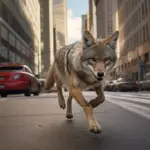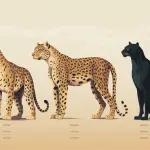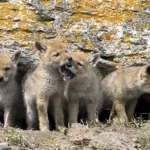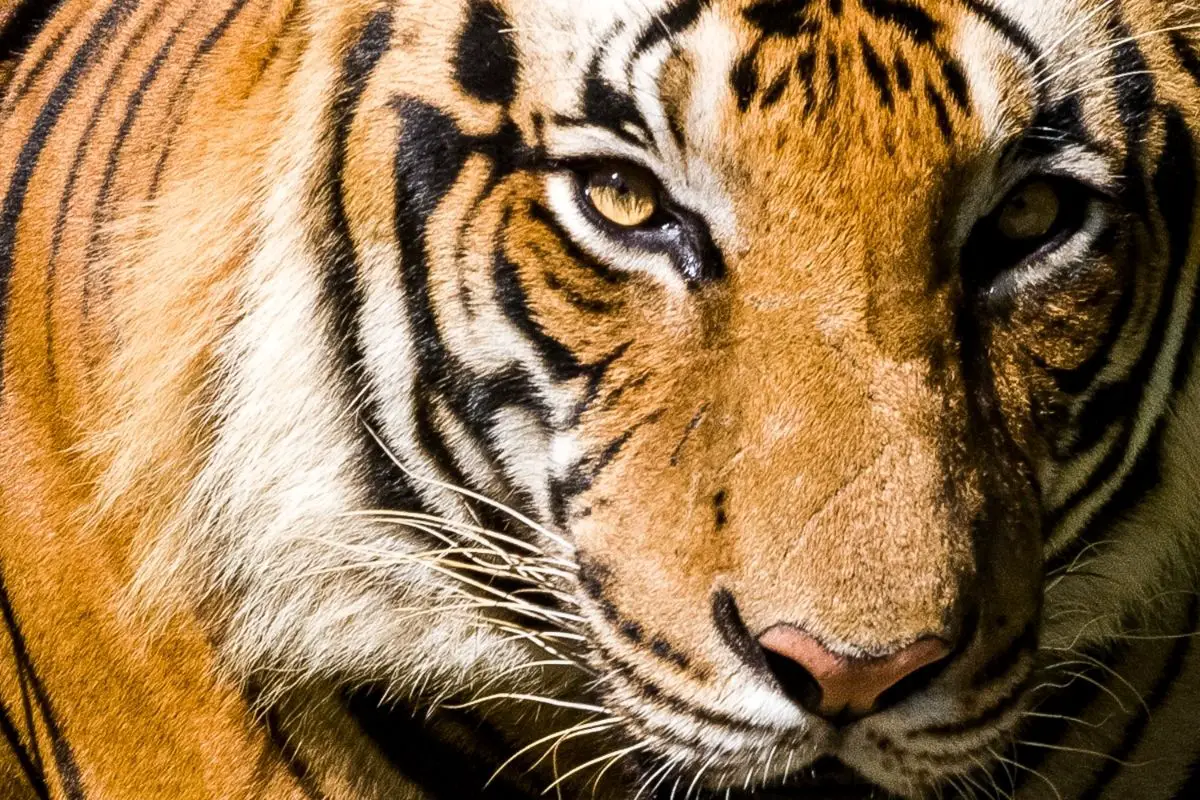Do Coyotes Eat Dead Animals? The question of whether these adaptable predators consume dead animals unveils interesting insights into a coyotes feeding habits and ecological role.
Coyotes are fascinating creatures known for their adaptability and resourcefulness. These intelligent canids have managed to thrive in various environments, from forests and deserts to urban areas.
In this blog post, we will explore the diet of coyotes, shedding light on their hunting behavior and dispelling common misconceptions. So, let’s dive in and discover what coyotes really eat.
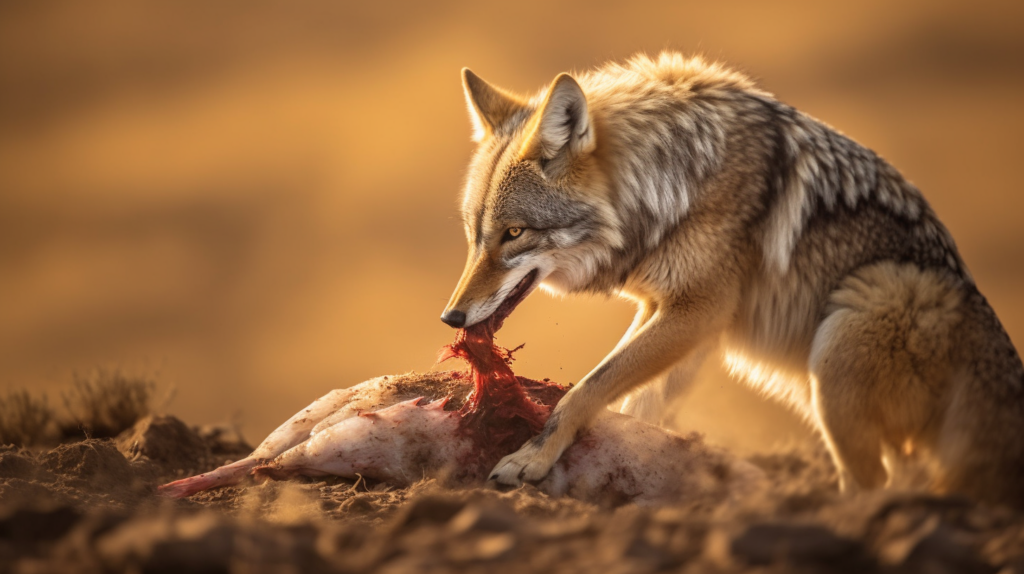
Hunting Behavior of Coyotes
Coyotes are opportunistic predators, meaning they have a diverse diet and can take advantage of various food sources. They exhibit both solo and group hunting behaviors depending on the circumstances and available prey.
Solo Hunting Coyotes
When hunting alone, coyotes primarily rely on their keen senses, particularly their exceptional sense of smell and sharp eyesight.
They are known to be patient and stealthy hunters, often stalking their prey before making a move.
Their remarkable sense of smell enables them to detect the presence of potential prey from a considerable distance.
Coyotes are highly adaptable and can modify their hunting techniques based on the environment and prey species.
For instance, in open areas, they might employ a stalking approach, crouching low to the ground and using the surrounding vegetation for cover.
In contrast, in more densely vegetated areas, they may adopt a “sit-and-wait” strategy, patiently observing their surroundings for any signs of movement.
Once a suitable opportunity arises, coyotes will swiftly pounce on their prey, relying on their agility and quick reflexes.
Small mammals such as mice, voles, and rabbits are often targeted during solo hunts.
Additionally, coyotes are skilled at hunting birds, reptiles, amphibians, and even insects when the opportunity presents itself.
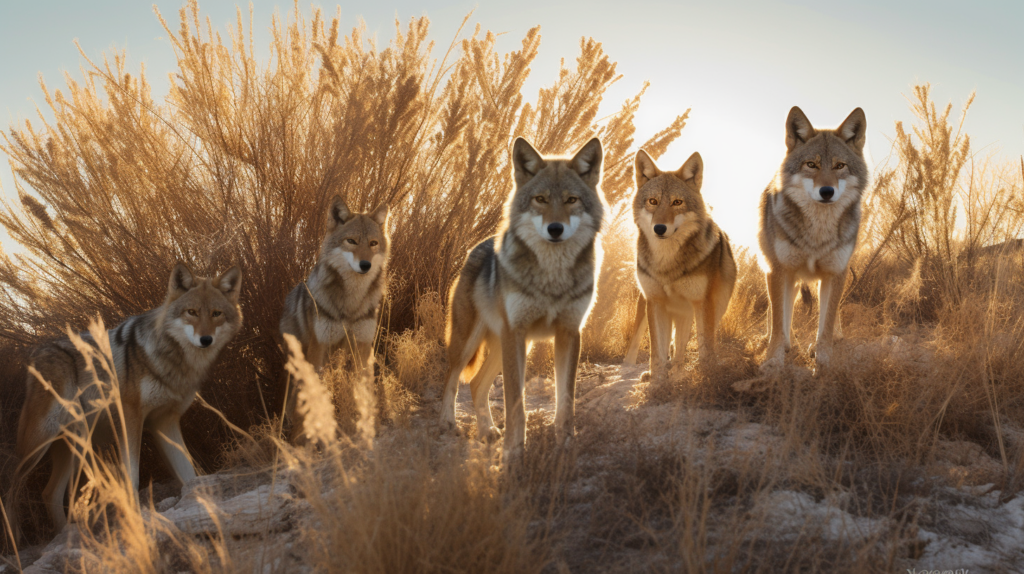
Group or Pack Hunting by Coyotes
Coyotes are also known to engage in cooperative hunting when the circumstances call for it.
This typically occurs when they are targeting larger prey or when there is a need for a collective effort to bring down a particular animal.
During group hunts, coyotes utilize their strong social bonds and communicate through vocalizations and body language to coordinate their actions.
By working together, they can pursue and surround larger prey such as deer, which would be challenging for an individual coyote to take down alone.
Group hunting enables coyotes to increase their chances of success and secure a more substantial meal.
It also demonstrates their remarkable ability to adapt their hunting strategies to different situations, showcasing their versatility as predators.
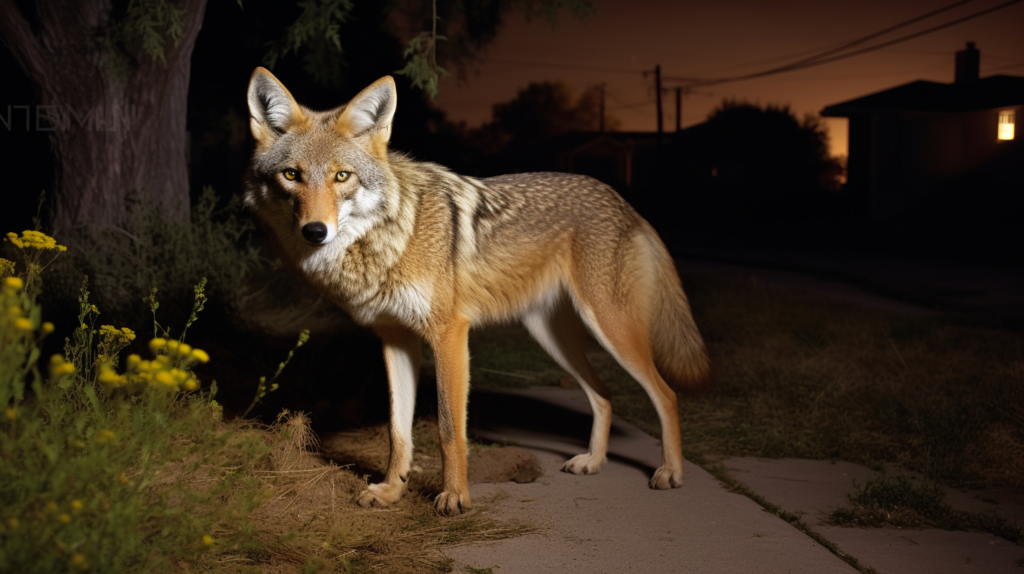
Misconceptions about Coyotes’ Diet
There are several misconceptions surrounding the diet of coyotes, including questions about whether they eat dead animals or even consume other coyotes.
Let’s address these common queries to gain a better understanding.
Do Coyotes Eat Dead Animals?
Coyotes are opportunistic feeders, and they will scavenge on carcasses if the opportunity arises.
However, they are primarily active hunters and rely on live prey for their sustenance.
Their strong preference is to hunt and kill fresh prey, as it provides them with the necessary nutrients and energy to survive.
While it is not their primary source of food, coyotes will not pass up an easy meal if they come across a dead animal.
This scavenging behavior helps them capitalize on available resources and adapt to fluctuating food availability.
Will a Coyote Eat a Dead Coyote?
In rare cases, coyotes may scavenge on a deceased member of their own species. However, it is important to note that cannibalism among coyotes is not a common occurrence.
Coyotes are typically more interested in hunting and consuming live prey rather than eating another dead coyotes.
Instances of cannibalism are more likely to occur when food resources are scarce or when territorial disputes result in the death of a coyote.
Even then, it remains an infrequent behavior within coyote populations.
In the next section, we will delve further into the specific food sources that coyotes target, shedding light on their role in the ecosystem and their impact on local wildlife populations.
Diet of Coyotes
Coyotes have a remarkably diverse diet that allows them to adapt to various food sources depending on availability.
Their opportunistic nature enables them to survive and thrive in different habitats and ecosystems. Let’s explore the key components of a coyote’s diet.
Small Mammals
Small mammals form a significant portion of a coyote’s diet. They are skilled predators when it comes to capturing and consuming creatures such as mice, voles, rabbits, squirrels, and groundhogs.
These agile canids employ their excellent sense of smell and agility to locate and pursue small mammals, making them an important part of their diet.
Insects and Invertebrates
Coyotes are not solely carnivorous predators. They also incorporate insects and invertebrates into their diet. Beetles, grasshoppers, caterpillars, and even earthworms are among the many invertebrates that coyotes consume.
This adaptable feeding behavior allows them to obtain essential nutrients, especially when other food sources may be scarce.
Fruit and Vegetable Matter
Coyotes display an unexpected flexibility in their diet by including fruit and vegetable matter. They have been observed consuming a variety of fruits, including berries, apples, and melons. Additionally, coyotes may consume certain vegetables like corn when they have access to agricultural fields or orchards.
This adaptability to incorporate plant material into their diet showcases the coyote’s ability to survive in different environments and exploit available food resources.
Adaptability to Different Food Sources
Coyotes are highly adaptable animals, capable of adjusting their diet based on food availability in their surroundings.
This adaptability is particularly evident in urban environments where they can exploit human-generated food sources such as garbage cans or even pet food left outdoors.
During seasons when their primary prey populations fluctuate or decline, coyotes are quick to shift their focus to alternative food sources.
This adaptability allows them to endure challenging conditions and maintain their population numbers.
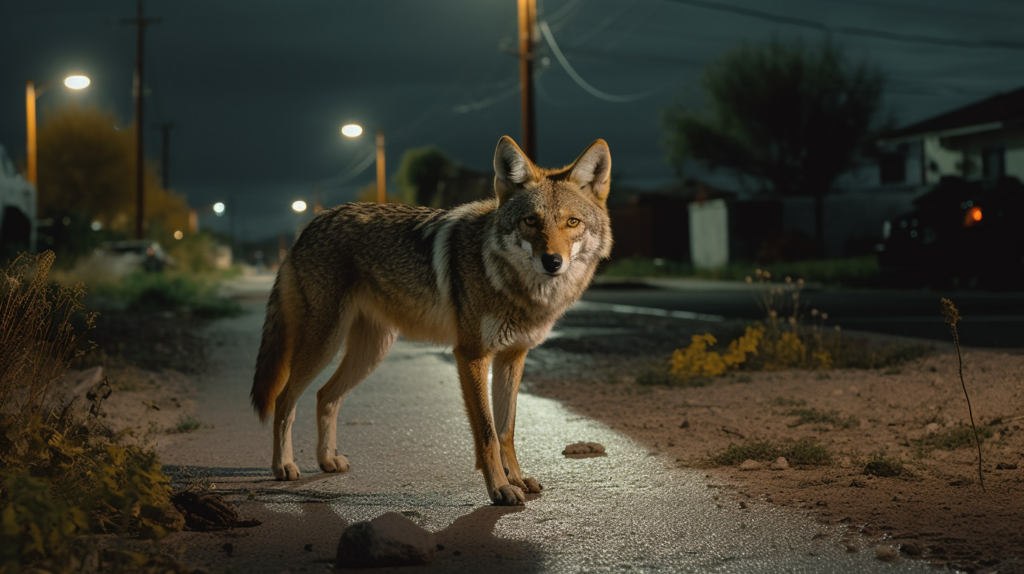
Coyotes and Scavenging
Coyotes exhibit scavenging behavior, which involves consuming carrion or dead animals.
While scavenging is not their primary feeding strategy, coyotes will take advantage of available carcasses to obtain an easy meal when the opportunity arises.
As opportunistic feeders, coyotes are drawn to carrion because it provides a readily available food source.
They possess strong olfactory senses that enable them to detect the scent of decaying flesh from a considerable distance.
Coyotes and Cannibalism
Scavenging helps them capitalize on resources that would otherwise go to waste, contributing to their ability to survive in various environments.
While it is rare, there have been documented cases of coyotes scavenging on dead members of their own species.
However, this behavior is more likely to occur when food resources are scarce or during territorial disputes resulting in the death of a coyote.
It is important to note that cannibalism or scavenging on other coyotes is not a common or typical behavior observed among coyote populations.
They are primarily focused on hunting live prey and utilizing other available food sources to meet their dietary needs.
Coyotes Will Eat Other Coyotes But its Not Common
Coyotes possess a varied and adaptable diet that includes small mammals, insects, fruits, vegetables, and occasionally carrion.
Their ability to adjust their feeding habits based on food availability allows them to thrive in a range of environments.
While they are opportunistic scavengers, cannibalism or the consumption of other coyotes is a rare occurrence and not a typical part of their diet.
In the following sections, we will explore the ecological role of coyotes, their impact on local wildlife populations, and their relationship with humans. Stay tuned for more fascinating insights into the world of coyotes.
Cannibalism, or the consumption of members of their own species, is a rare behavior observed among coyotes.
While it is not a common occurrence, there have been instances where coyotes engage in cannibalistic behavior.
Let’s explore some of the factors that may contribute to cannibalism among coyotes.
In situations where food resources are scarce, such as during periods of drought or when prey populations decline, coyotes may scavenge on the carcasses of other coyotes.
This behavior is more likely to occur when there is a limited availability of fresh prey or when there is competition for resources within the coyote population.
Territorial Disputes
Coyotes are territorial animals, and conflicts between individuals or groups can sometimes lead to aggression and even death. In some cases, territorial disputes can result in the death of a coyote.
When a coyote dies in such circumstances, it is possible for other coyotes to scavenge on the carcass. This behavior may serve as a way to eliminate a rival and assert dominance over a territory.
It is important to note that cannibalism among coyotes is not a normal or typical behavior. It is a response to specific circumstances and occurs infrequently within coyote populations.
Coyotes are opportunistic predators with a diverse and adaptable diet. They primarily rely on hunting live prey, including small mammals, insects, and birds.
Additionally, they incorporate fruits, vegetables, and occasionally carrion into their diet. While scavenging behavior is observed, cannibalism or the consumption of other coyotes is a rare occurrence.
Understanding the hunting behavior and diet of coyotes provides valuable insights into their ecological role and their ability to adapt to different environments.
By being opportunistic predators, coyotes play an important role in maintaining balanced ecosystems.
- Sink Your Teeth Into This: Analyzing the Powerful Lion Bite Force - September 8, 2023
- Siberian Tigers: Everything You Need To Know - September 4, 2023
- Do Lions Eat Humans? Understanding Lion Aggression and Risks - September 4, 2023

